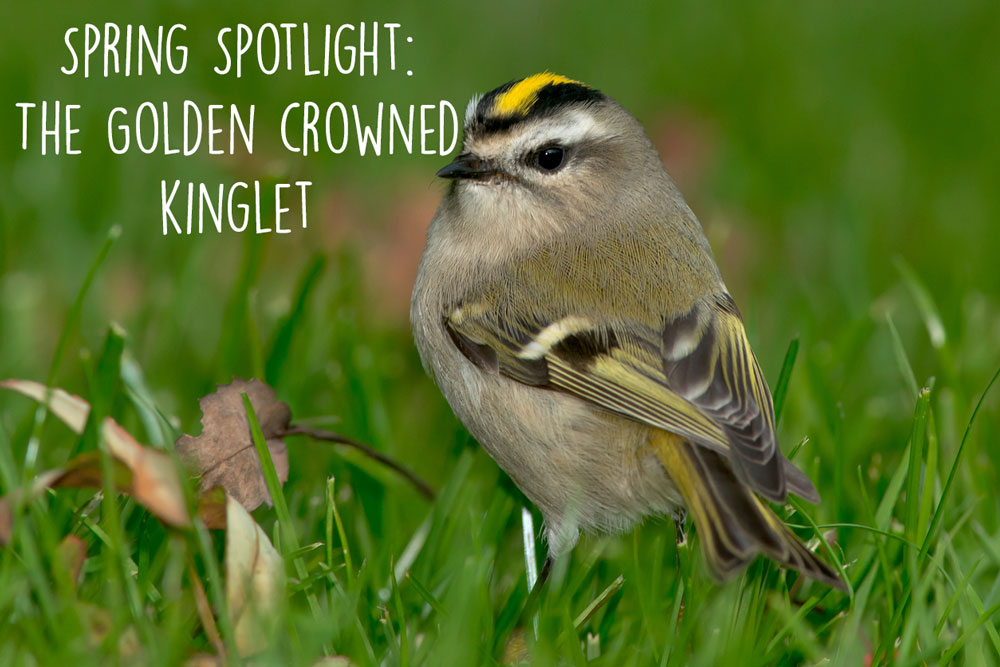Offer
Provide additional details about the offer you're running.
Provide additional details about the offer you're running.
Provide additional details about the offer you're running.

With April just around the corner, we are patiently awaiting the best spring month (in our opinion!) for birding here in Eastern Ontario. As the snow continues to (slowly) melt and the temperatures continue to (slowly) rise, spring is upon us and already we are seeing and hearing a number of our spring and summer birds.
There truly is nothing like this time of year in the birding world, as more and more birds arrive, develop their striking spring plumage, find and attract mates, build nests and eventually make those beautiful little babies to be enjoyed for years to come.
As such, we always take the opportunity this time of year to highlight a few of our favourite visitors, where to find them and how to best identify them. This week, we want to take a closer look at the golden-crowned kinglet; a truly unique bird to behold and observe should you be offered the chance.
Where to find the golden-crowned kinglet
This bird is very evenly distributed across North America, with much of the continental United States making up its non-breeding or year-round range. As of lately, there are multiple reports indicating that more and more of these lovely birds are sticking around here in Canada, particularly in British Columbia, southern Ontario and the Canadian Maritimes.
These birds are extremely small in size and can be tricky to spot in the field as they tend to stick to thick and dense stands of spruce and fir trees during the summer months. Give your neck a good stretch before heading out as you will be looking upwards towards the treetops trying to catch a momentary glimpse at one of these colourful and energetic little birds.
Identification
As we stated above, these birds are extremely small – sizing found somewhere between a chickadee and a hummingbird. With a short and stout bill, these birds are denoted by their extremely unique crown, which as their name suggests, is golden-orange in colour. The remainder of the bird’s body is a pale olive colouring, accentuated with brilliant white, yellow and black back and flight feathers.
Vocals
As Bob denotes, the call and songs of these birds are reminiscent of a squeaky childhood wagon wheel being pulled down the street. Their song is made up of roughly 14 different notes that are high in pitch and often will end in a wonderful warble that any avid birder will quickly commit to memory.
High Quality Blend